The ESO has been doing some marvelous construction, and research. A couple of days ago, they finished test firing their first laser of the 4 Laser Guide Star Facility . This was the first step, that is going to pave way for the completion of the full Adaptive Optics Facility.
From what I gather, the 4LGSF will, basically, create artificial stars with the help of the high energy lasers interacting with the Sodium layer in the Earth’s mesosphere. The full Adaptive Optics Facility corrects image distortions caused by atmospheric turbulence. It does this by using sensors to analyze the atmospheric turbulence, and a deformable mirror integrated into the telescope. In order for the whole setup to correct image distortions caused by the atmospheric turbulence, several bright point-like stars need to be available at hand. These bright, point-like stars need to be available very close to the target science in the sky. Finding several natural stars for the purpose of correcting image distortion caused by atmospheric turbulence seems impossible for most, if not for all targets in the sky.
The Adaptive Optics Facility uses sensors to analyze the atmospheric turbulence and a deformable mirror integrated in the telescope to correct for the image distortions caused by the atmosphere. But several bright point-like stars needs to be at hand in order to correct for the effects of turbulence, and these need to be very close to the science target in the sky.
Finding multiple natural stars for this role is unlikely. So, to make correcting for the atmospheric turbulence possible everywhere in the sky, for all possible science targets, powerful laser beams are projected into the sky. When the beams interact with the sodium layer high in the atmosphere they create artificial stars. By measuring the atmospherically induced motions and distortions of these artificial stars, and making minute adjustments to the deformable secondary mirror, the telescope can produce images with much greater sharpness than is possible without adaptive optics. - Credit: ESO. ann15034 — Announcement - First Light of New Laser at Paranal.
The whole point of the the 4LGSF is to produce better quality images via the telescope. What caught my attention was the wonderful imagery that went along with the science of creating point-bright artificial stars in the sky. I wonder if those stars can be capture on a camera…
Some Awesome Imagery Showing the First Light of the New Laser at Paranal.
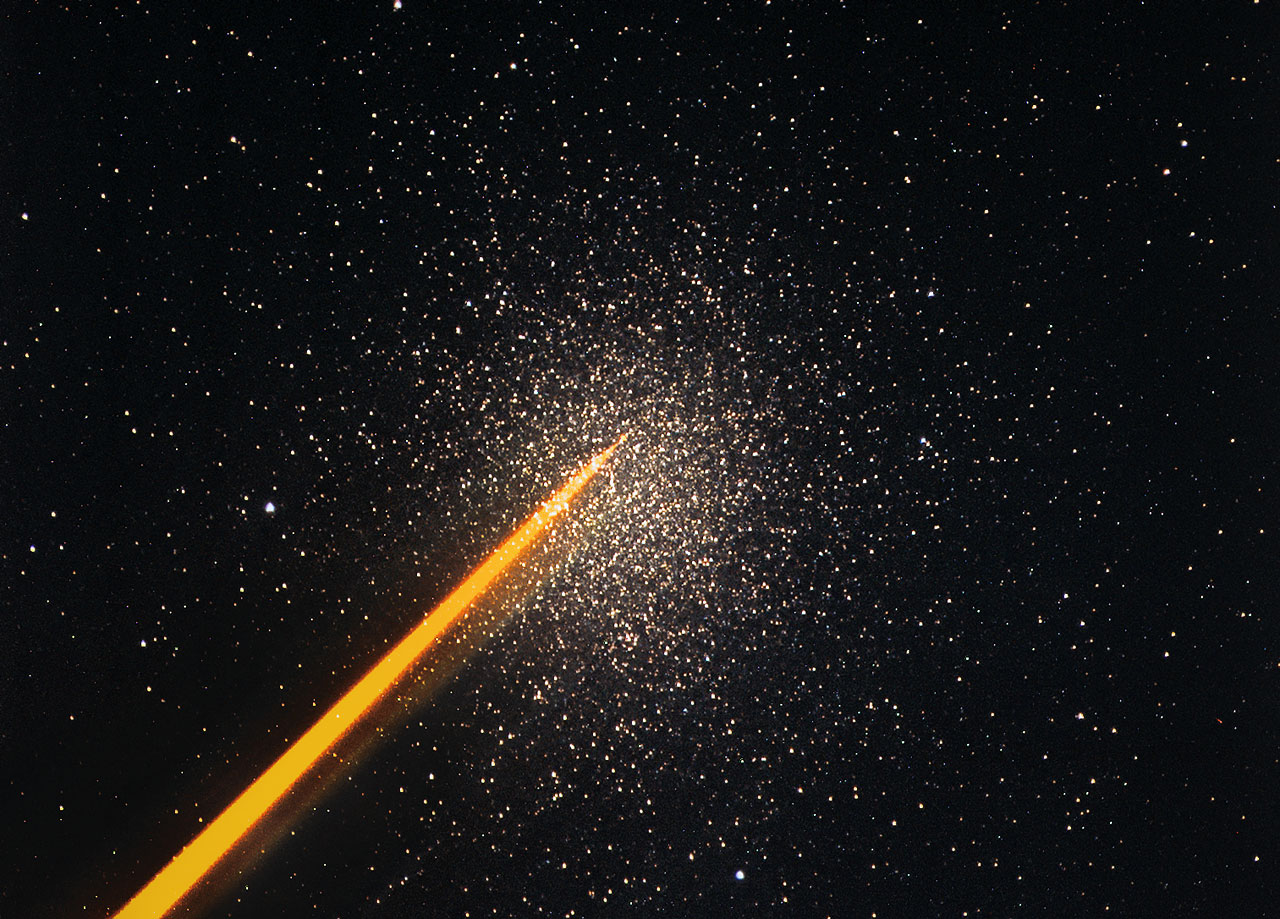
This image was taken by the Laser Pointing Camera (LPC), shows the intense orange beam pointed at a globular cluster. Credit:First light of new laser on Adaptive Optics Facility at Paranal - ESO/D. Bonaccini Calia and the 4LGSF team.
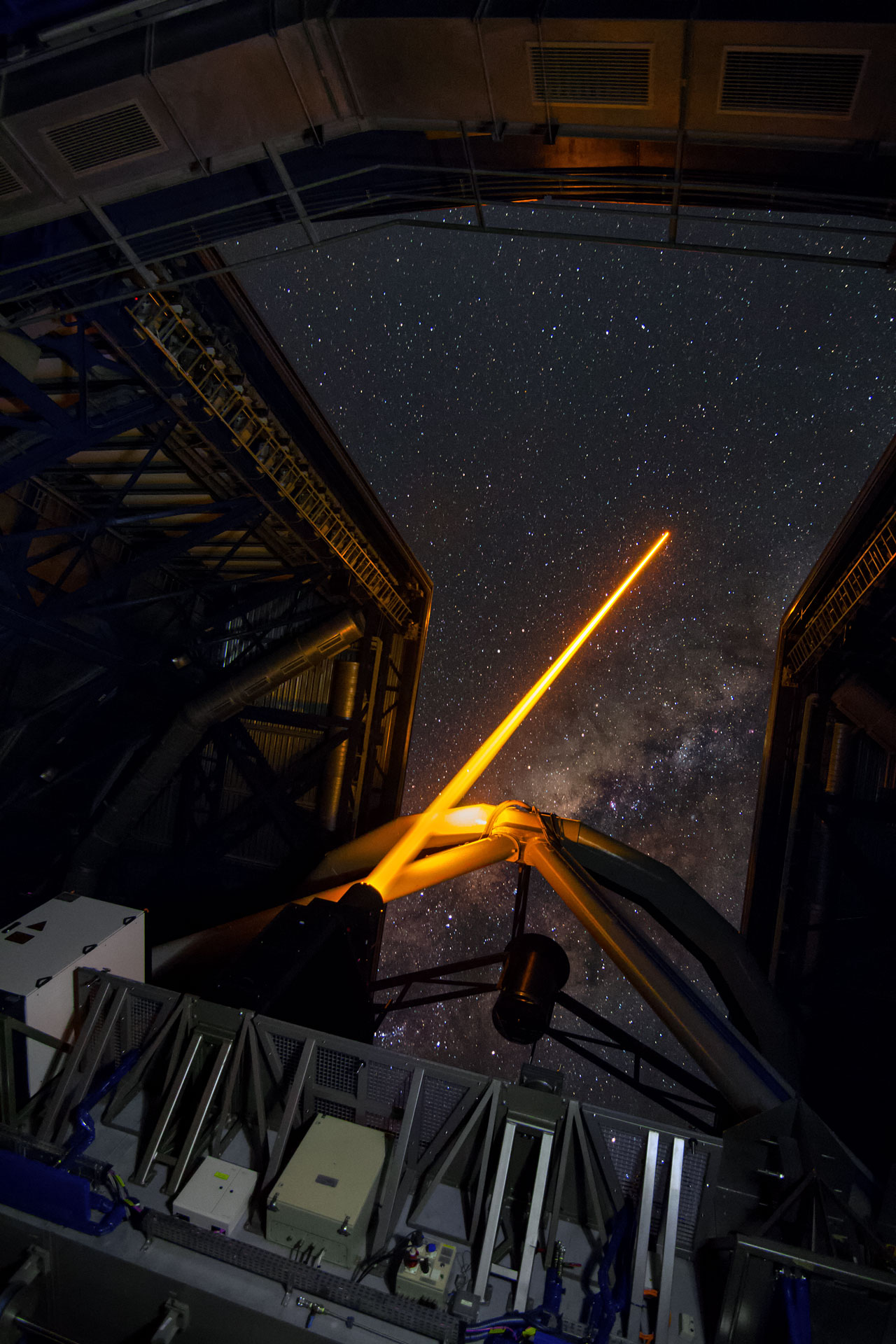
View of the the laser being launched into the night sky, from the inside of observatory.Credit: First light of new laser on Adaptive Optics Facility at Paranal - J. Girard/ESO.
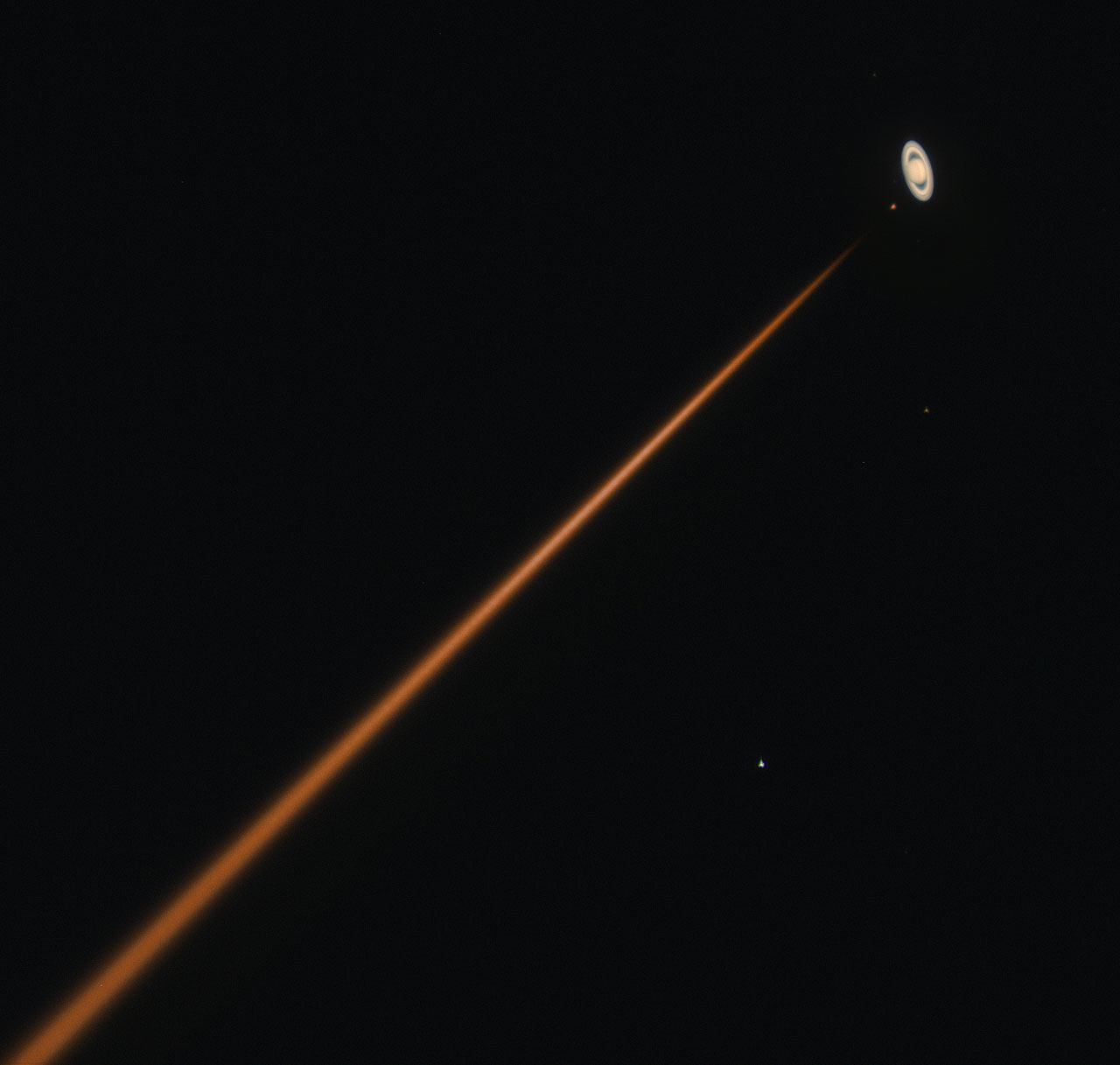
Here the intense orange beam is pointed close to Saturn. Credit:First light of new laser on Adaptive Optics Facility at Paranal - ESO/D. Bonaccini Calia and the 4LGSF team.
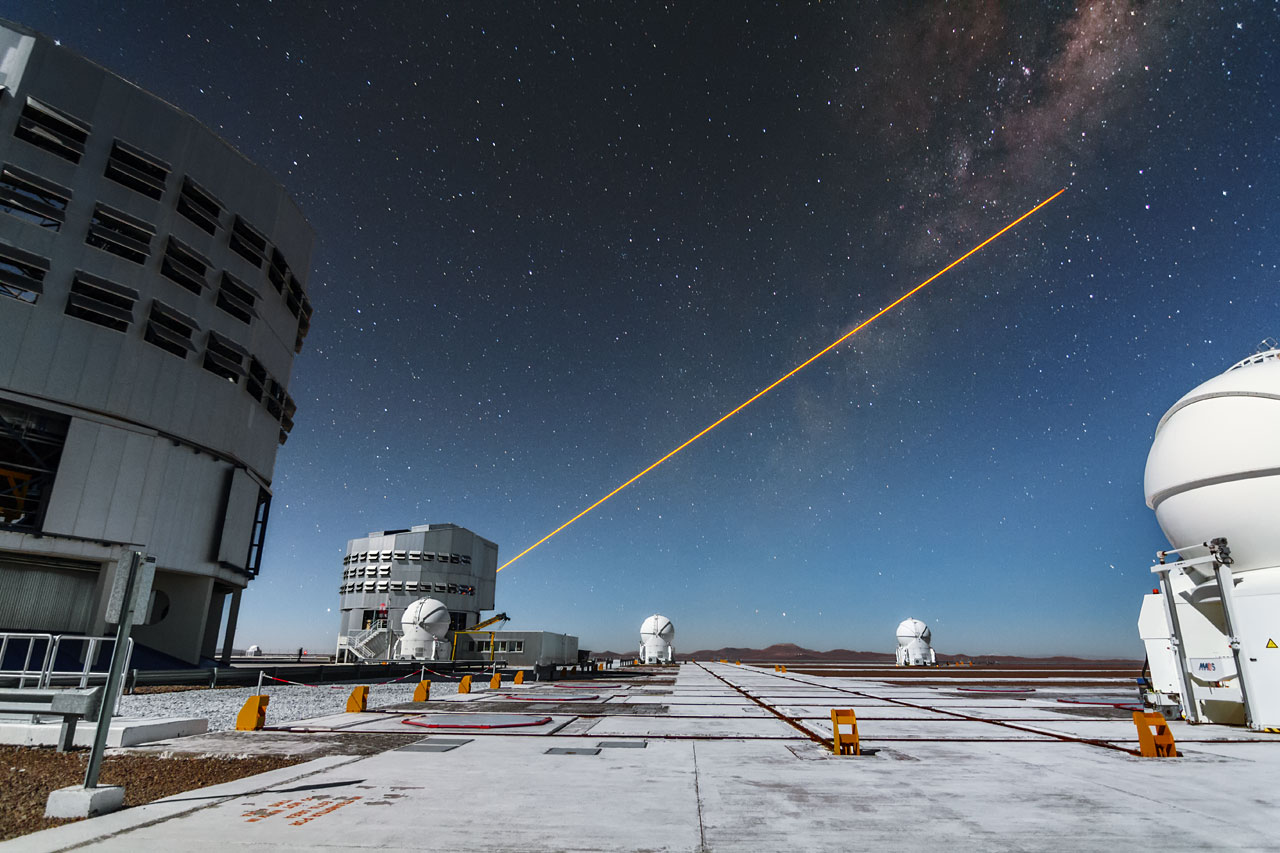
The laser being launched into the night sky. Credit:First light of new laser on Adaptive Optics Facility at Paranal - J. Girard/ESO.
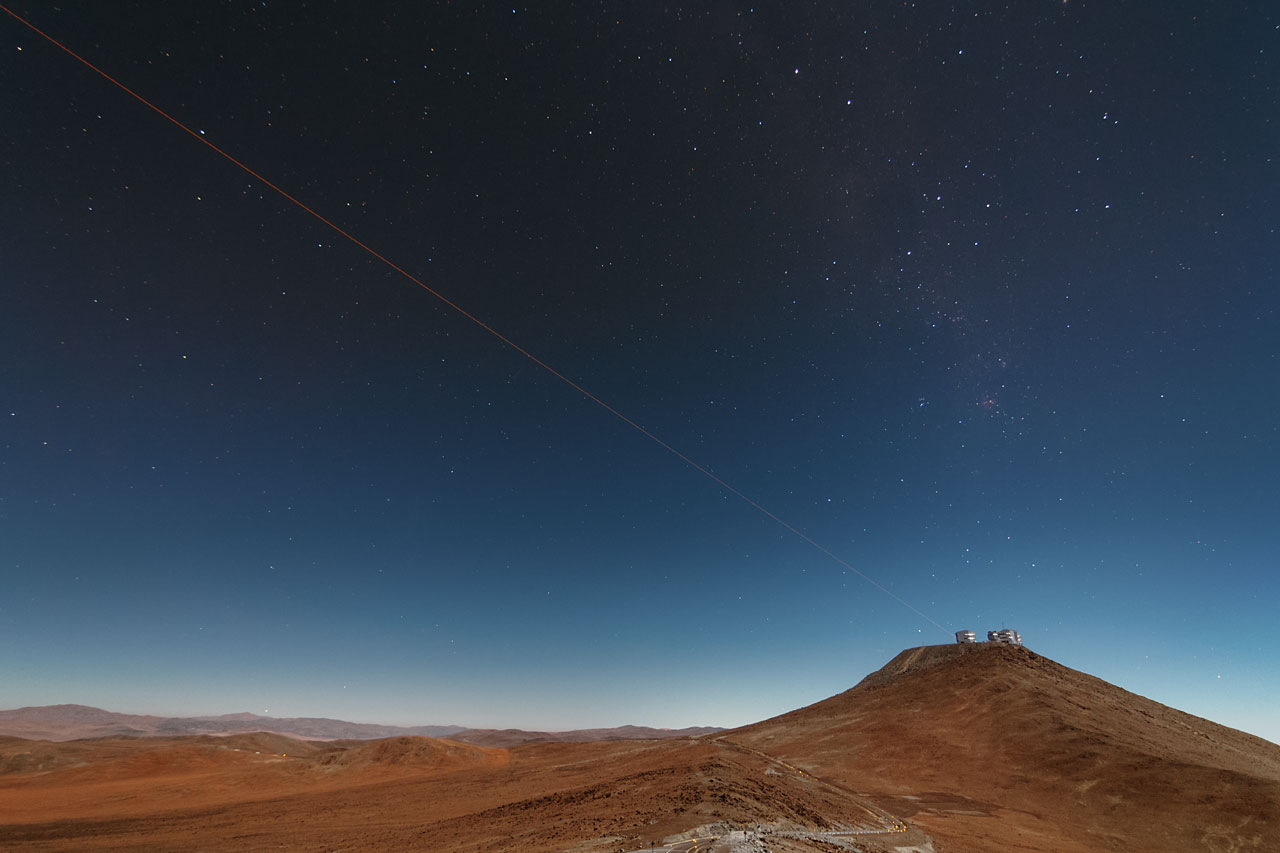
The laser being launched into the night sky. Credit:First light of new laser on Adaptive Optics Facility at Paranal - J. Girard/ESO.
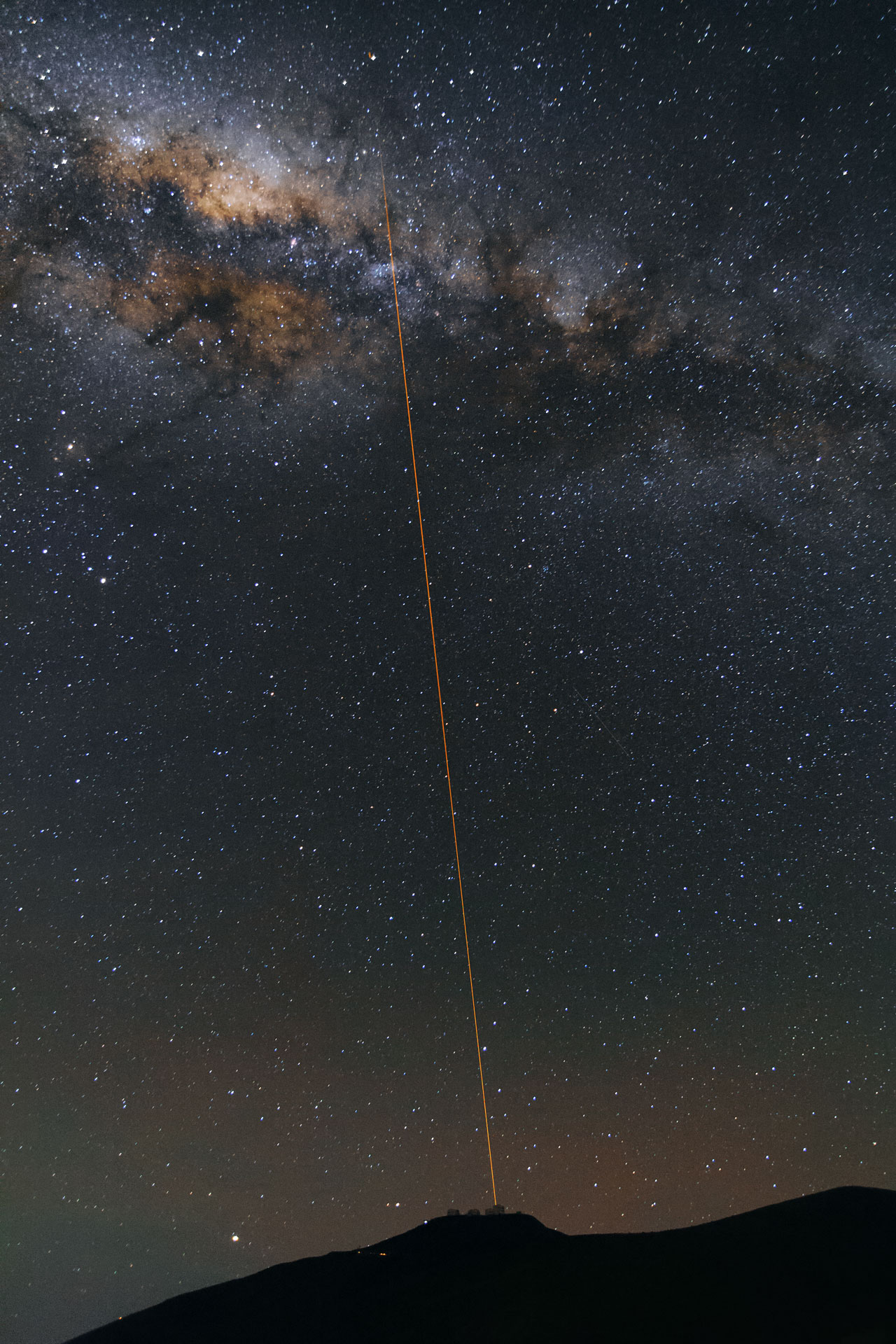
The Laser being launched into the night sky. Credit:First light of new laser on Adaptive Optics Facility at Paranal - J. Girard/ESO.
Header image credit: First light of new laser on Adaptive Optics Facility at Paranal - J. Girard/ESO
